Europe situation
An estimated 362,000 refugees and migrants risked their lives crossing the Mediterranean Sea in 2016, with 181,400 people arriving in Italy and 173,450 in Greece. In the first half of 2017, over 105,000 refugees and migrants entered Europe.
This movement towards Europe continues to take a devastating toll on human life. Since the beginning of 2017, over 2,700 people are believed to have died or gone missing while crossing the Mediterranean Sea to reach Europe, with reports of many others perishing en route. These risks do not end once in Europe. Those moving onwards irregularly have reported numerous types of abuse, including being pushed back across borders.
With so many lives at risk, rescue-at-sea operations undertaken by all actors must remain a priority.
Despite some progress in increasing the number of safe pathways to Europe, these opportunities are far too few to offer a feasible alternative to risky irregular journeys for people in need of protection. Further efforts are needed to increase access to existing legal pathways, including family reunification. UNHCR also calls for European and other countries to offer an additional 40,000 resettlement places, which will complement already existing commitments, to be made available for refugees located in 15 priority countries along the Central Mediterranean route.
Those arriving in Europe need adequate reception and assistance, particularly those with specific needs, including unaccompanied and separated children and survivors of sexual and gender based violence, and access to fair and efficient asylum procedures. More solidarity is needed within the EU to ensure protection, including through efficient and speedy family reunion and relocation.
Overall, there is a need for a comprehensive plan of action that will support long-term solutions to the complex issue of mixed migration and help address its root causes, in close cooperation with countries of origin and transit and in line with international law.
"The simple truth is that refugees would not risk their lives on a journey so dangerous if they could thrive where they are."
Melissa Fleming, UNHCR
What is UNHCR doing to help?
UNHCR, working with partners, is providing a broad range of support and assistance in Europe for refugees and asylum-seekers. These efforts include humanitarian and cash assistance, provision of accommodation and support to improve reception conditions, prevention and response to sexual and gender-based violence, protection monitoring and interventions, engaging with refugee communities to enhance their participation and including their voice in their voice in the response, identification and support to persons with specific needs, including separated and unaccompanied children, and referral to appropriate services.
To adequately respond to the protection needs of refugees and migrants arriving in Europe, UNHCR launched the regional Refugee and Migrant Response Plan (RRMP), involving 60 partners.
To improve the situation of refugee and migrant children arriving and staying in Europe without their parents or care givers, UNHCR, UNICEF and IRC issued a Roadmap and a call to action.
UNHCR has sets out a practical vision for the EU’s global engagement with refugees and for the reform of its asylum system in its paper “Better Protecting Refugees in the EU and Globally”.
Together, with your support, we can give millions the help they so desperately need.
In photos: Integration in Europe
6 October 2017
-
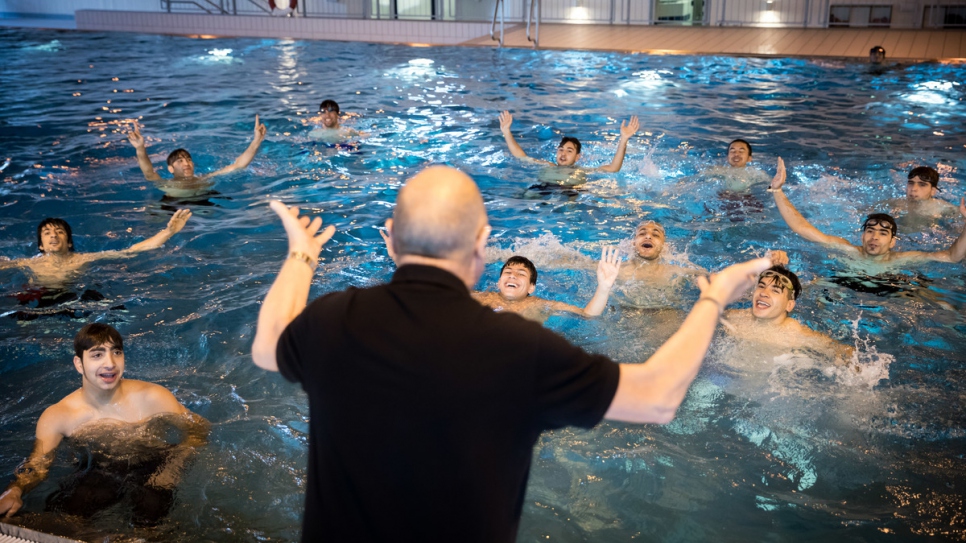 Local volunteer Heino Rahmstorf leads a swimming session for asylum-seekers from Syria, Iraq and Afghanistan at the swimming pool in Neu Wulmstorf, Germany. © UNHCR/Gordon Welters
Local volunteer Heino Rahmstorf leads a swimming session for asylum-seekers from Syria, Iraq and Afghanistan at the swimming pool in Neu Wulmstorf, Germany. © UNHCR/Gordon Welters -
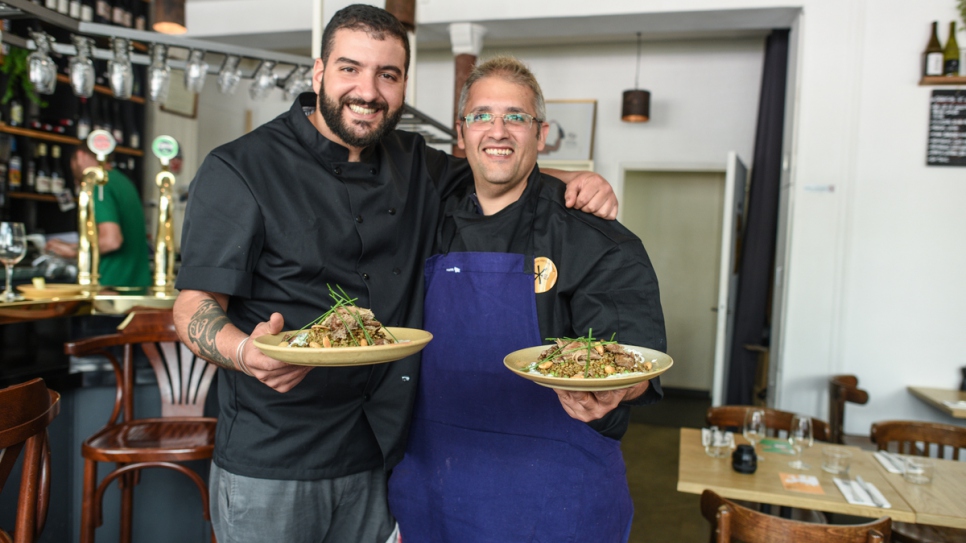 Syrian refugee chef Nabil Attar and French chef Walid Sahed show their joint creation at Les Pantins restaurant in Paris on June 16, 2017. © UNHCR/Benjamin Loyseau
Syrian refugee chef Nabil Attar and French chef Walid Sahed show their joint creation at Les Pantins restaurant in Paris on June 16, 2017. © UNHCR/Benjamin Loyseau -
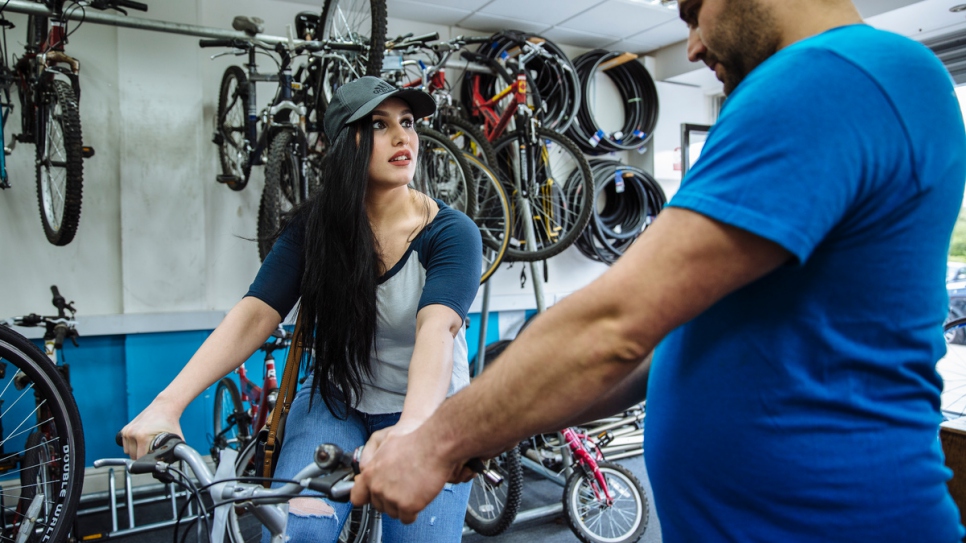 Sulaf, a Palestinian refugee displaced from Damascus, Syria, tests a bicycle for size with the help of Jim Stein, the founder of The Bike Project in London. The volunteer initiative refurbishes second-hand bikes for refugees and asylum-seekers. © UNHCR/David Azia
Sulaf, a Palestinian refugee displaced from Damascus, Syria, tests a bicycle for size with the help of Jim Stein, the founder of The Bike Project in London. The volunteer initiative refurbishes second-hand bikes for refugees and asylum-seekers. © UNHCR/David Azia -
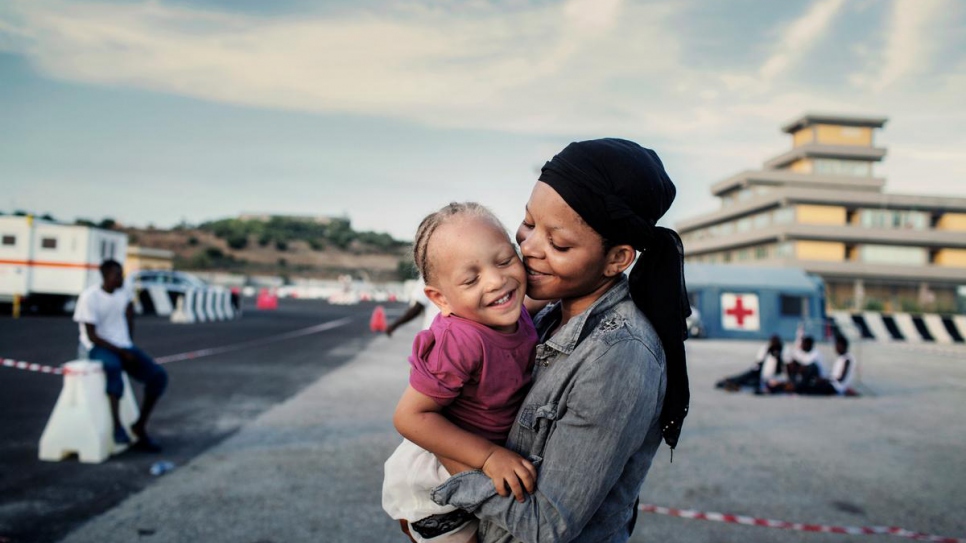 Nigerian refugee Shalom, 24, hugs her young daughter after being rescued at sea and taken to the Italian port of Augusta. © UNHCR/Alessandro Penso
Nigerian refugee Shalom, 24, hugs her young daughter after being rescued at sea and taken to the Italian port of Augusta. © UNHCR/Alessandro Penso -
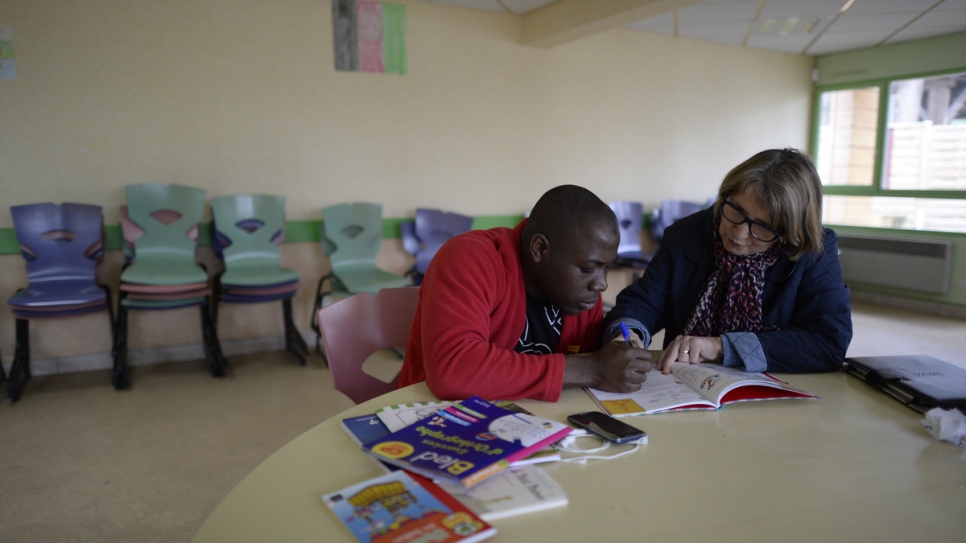 "When you see their desire to learn, it gives you a boost of energy," says Brigitte Dubosclard, a volunteer French teacher for refugees in Pessat-Villeneuve, France. The small town in central France converted its château into a reception centre that has welcomed 136 refugees. © UNHCR/Benjamin Loyseau
"When you see their desire to learn, it gives you a boost of energy," says Brigitte Dubosclard, a volunteer French teacher for refugees in Pessat-Villeneuve, France. The small town in central France converted its château into a reception centre that has welcomed 136 refugees. © UNHCR/Benjamin Loyseau -
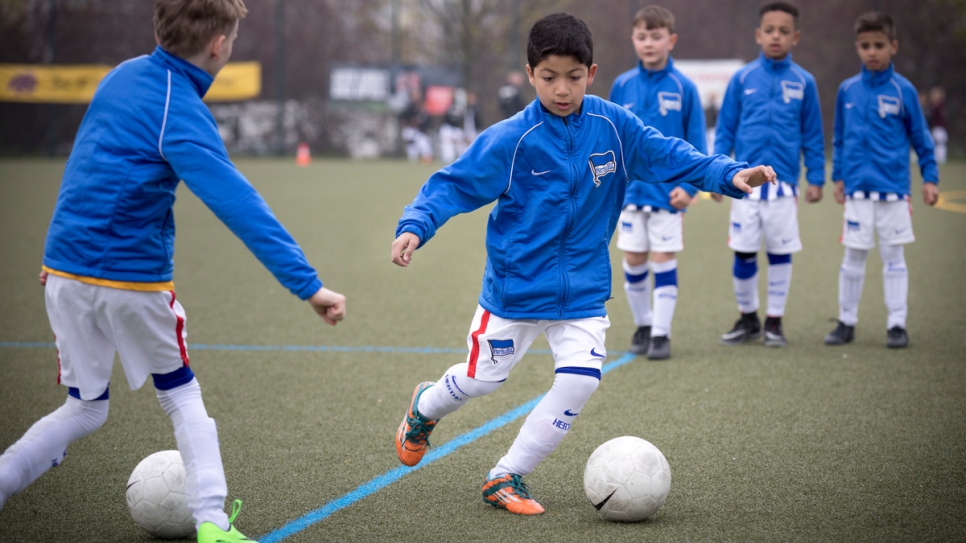 "I couldn't play football in Syria, but here I can play whenever I want." Eight-year-old Syrian refugee Ahmad Alzaher takes part in a trial for Bundesliga club Hertha in Berlin, Germany. © UNHCR/Christian Mang
"I couldn't play football in Syria, but here I can play whenever I want." Eight-year-old Syrian refugee Ahmad Alzaher takes part in a trial for Bundesliga club Hertha in Berlin, Germany. © UNHCR/Christian Mang -
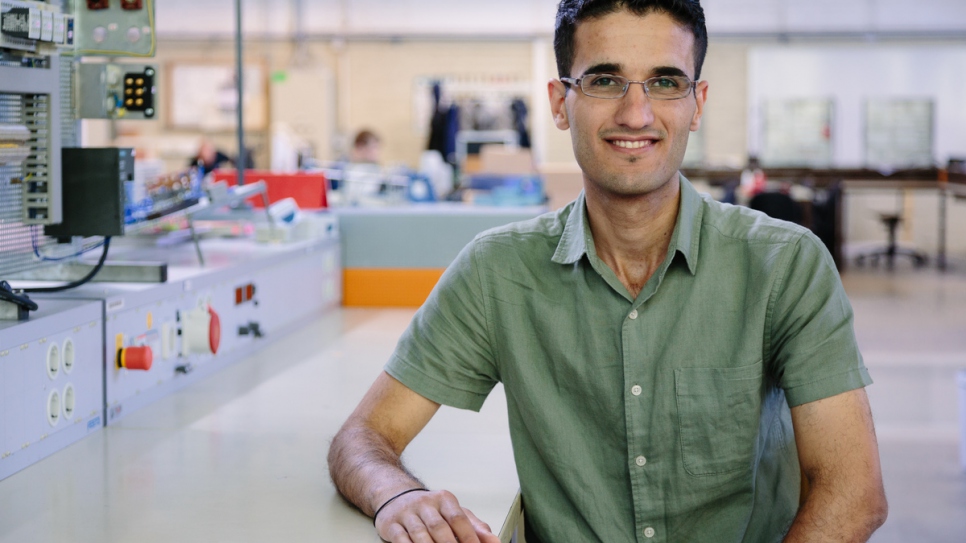 "It's an amazing chance to learn about this newer technology," says Syrian refugee, Mahmoud Nouri Al Abdulah, 26, as he prepares to begin a three-year training programme with Germany's largest railway operator, Deutsche Bahn. © UNHCR/Aubrey Wade
"It's an amazing chance to learn about this newer technology," says Syrian refugee, Mahmoud Nouri Al Abdulah, 26, as he prepares to begin a three-year training programme with Germany's largest railway operator, Deutsche Bahn. © UNHCR/Aubrey Wade -
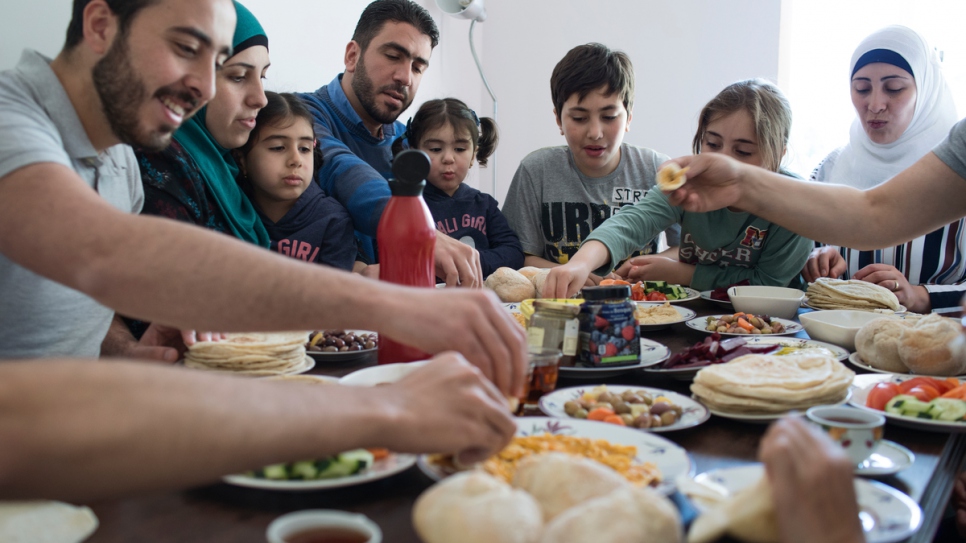 The Dabah family, who fled war in Syria in 2012, eat breakfast at their home in Lisbon, Portugal. © UNHCR/Bruno Galán Ruiz
The Dabah family, who fled war in Syria in 2012, eat breakfast at their home in Lisbon, Portugal. © UNHCR/Bruno Galán Ruiz -
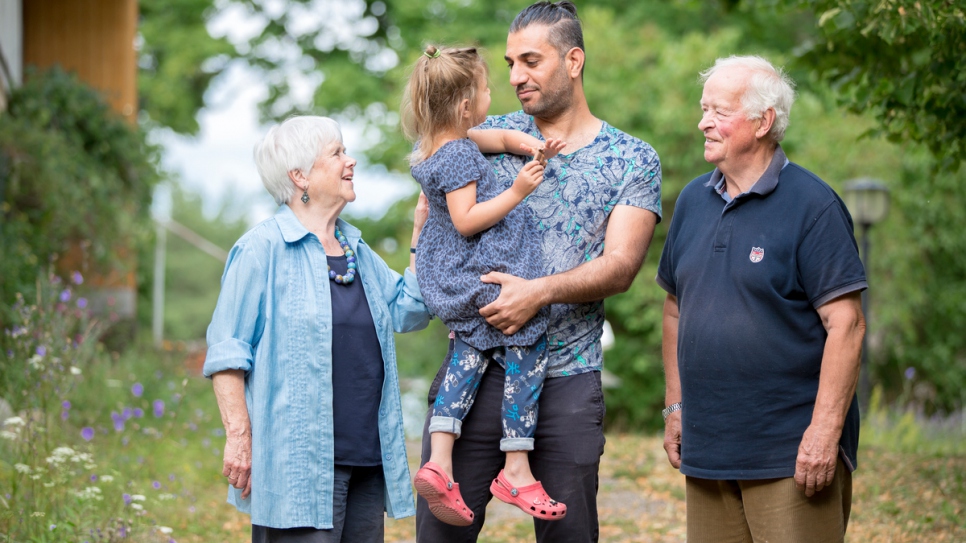 Mona and Kaj are Finnish pensioners who have assumed the role of grandparents for 3-year-old Diana, a refugee from Iraq who arrived on the Finnish island of Nagu in 2015. Diana and her father, Azaldeen, fled Iraq after her mother was abducted. © UNHCR/Max-Michel Kolijn
Mona and Kaj are Finnish pensioners who have assumed the role of grandparents for 3-year-old Diana, a refugee from Iraq who arrived on the Finnish island of Nagu in 2015. Diana and her father, Azaldeen, fled Iraq after her mother was abducted. © UNHCR/Max-Michel Kolijn -
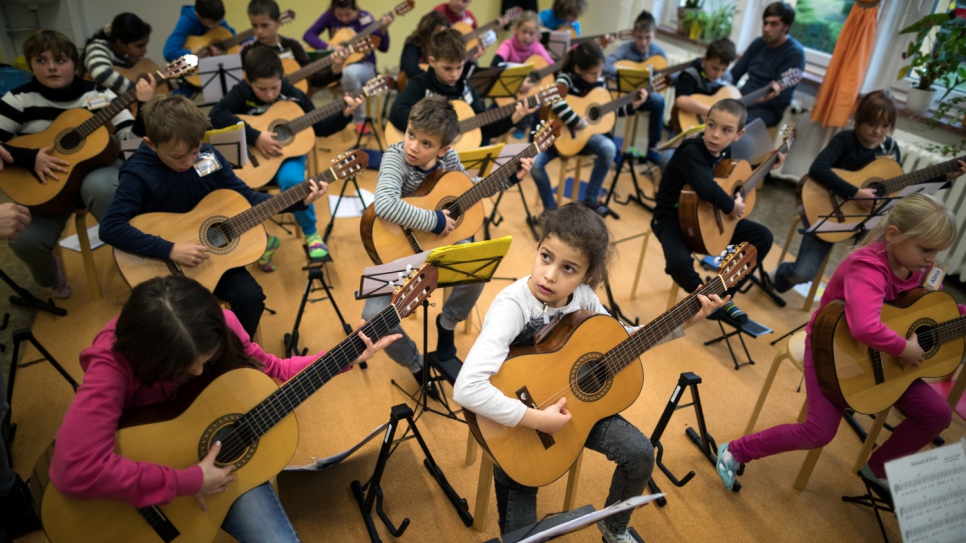 Over the course of eight years, the population of Golzow, Germany, shrank by 12 per cent, to just 835 people. Now Syrian refugees like Kamala are helping to reverse the decline. © UNHCR/Gordon Welters
Over the course of eight years, the population of Golzow, Germany, shrank by 12 per cent, to just 835 people. Now Syrian refugees like Kamala are helping to reverse the decline. © UNHCR/Gordon Welters -
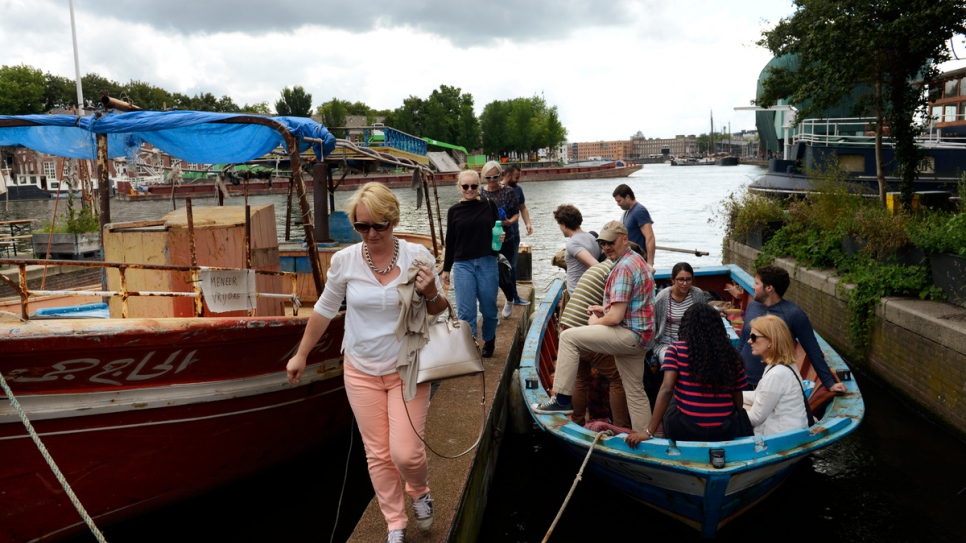 Boats used by refugees to reach safety in Europe are now being repurposed as tour boats on the canals of Amsterdam, with refugees serving as guides. The "Mister Friday" (left) once carried 282 refugees and migrants across the Mediterranean, while "Hedir" (right), meaning "Stormy Weather," carried 76. © UNHCR/Chris de Bode
Boats used by refugees to reach safety in Europe are now being repurposed as tour boats on the canals of Amsterdam, with refugees serving as guides. The "Mister Friday" (left) once carried 282 refugees and migrants across the Mediterranean, while "Hedir" (right), meaning "Stormy Weather," carried 76. © UNHCR/Chris de Bode -
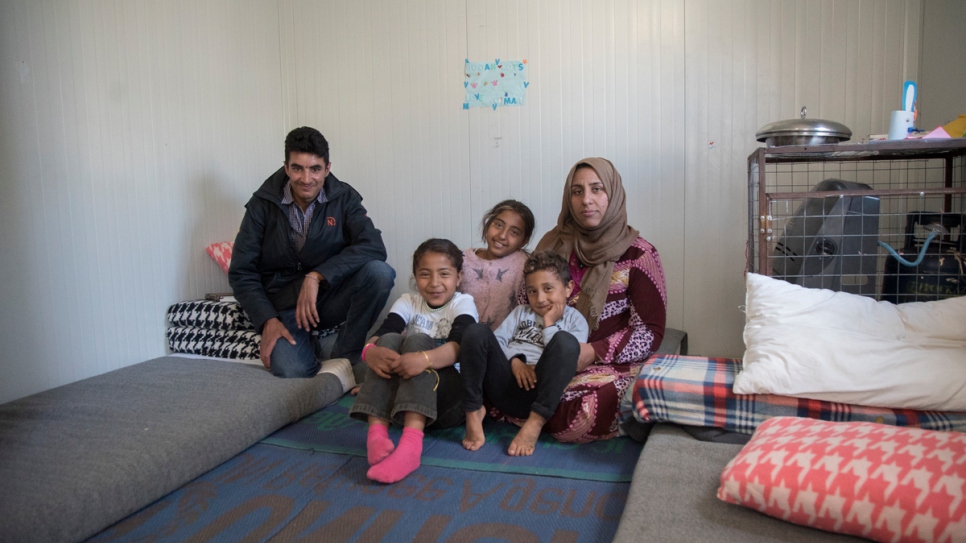 A Syrian family inside their prefabricated container installed by UNHCR at Kara Tepe, in Lesvos, Greece. Over 5,000 refugees and migrants have found shelter in 1,000 prefabricated houses installed by UNHCR across Greece. © UNHCR/Pavlos Avagianos
A Syrian family inside their prefabricated container installed by UNHCR at Kara Tepe, in Lesvos, Greece. Over 5,000 refugees and migrants have found shelter in 1,000 prefabricated houses installed by UNHCR across Greece. © UNHCR/Pavlos Avagianos -
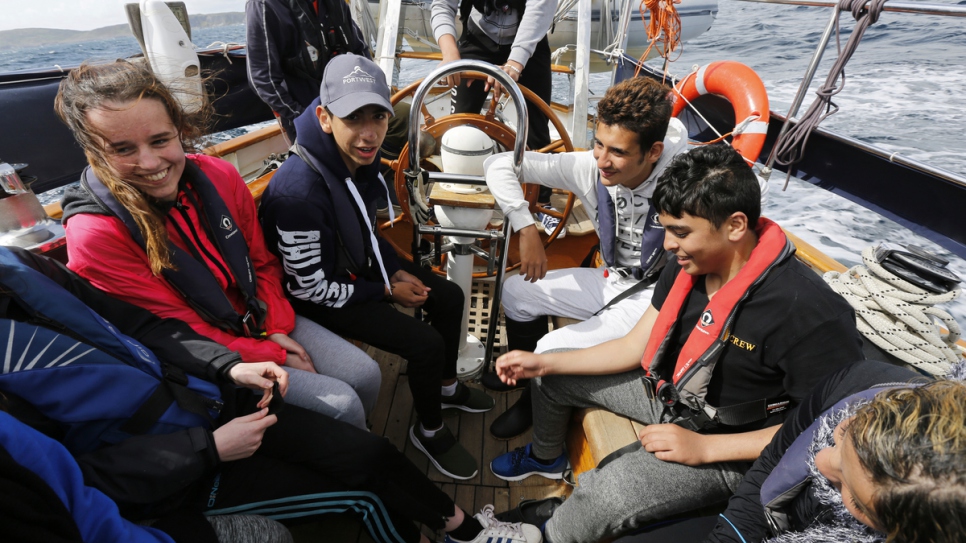 Teenagers from Syria and Ireland learn to sail together off the coast of West Cork, Ireland. The teens, who all live in Ballaghaderreen in County Roscommon, are learning sailing skills as well as teamwork. © UNHCR/Phil Behan
Teenagers from Syria and Ireland learn to sail together off the coast of West Cork, Ireland. The teens, who all live in Ballaghaderreen in County Roscommon, are learning sailing skills as well as teamwork. © UNHCR/Phil Behan -
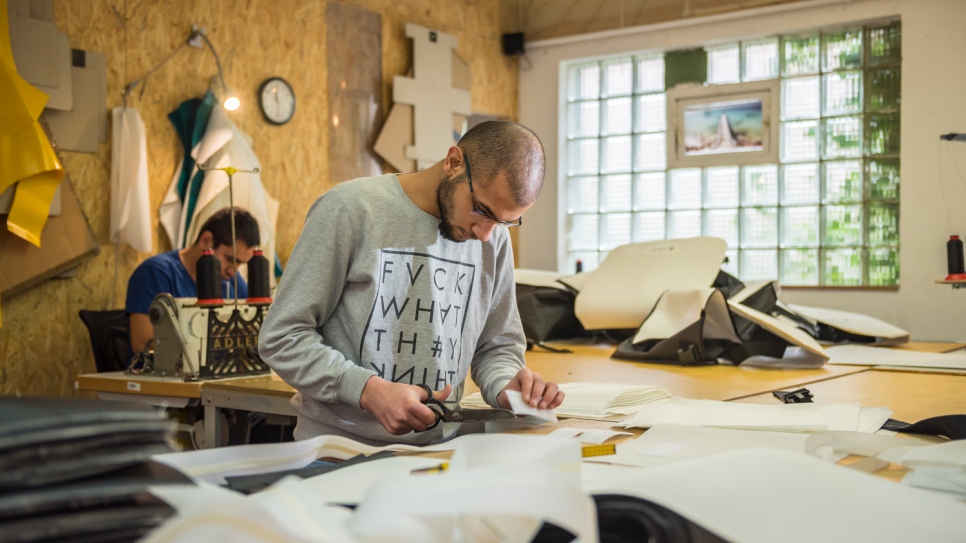 In Damascus, Yousef, 23, used to make curtains with his father. Now refugees in Kiel, Germany, they put their skills to good use at a sail-making company named Coastworxx. © UNHCR/Gerhard Westrich
In Damascus, Yousef, 23, used to make curtains with his father. Now refugees in Kiel, Germany, they put their skills to good use at a sail-making company named Coastworxx. © UNHCR/Gerhard Westrich















